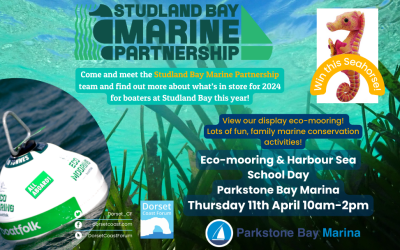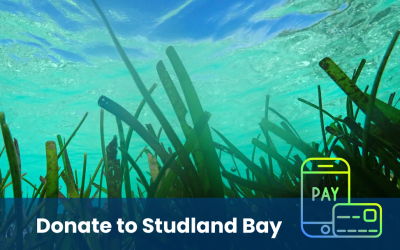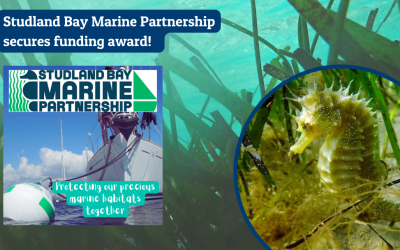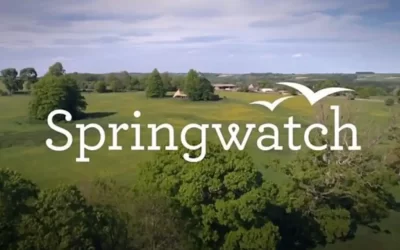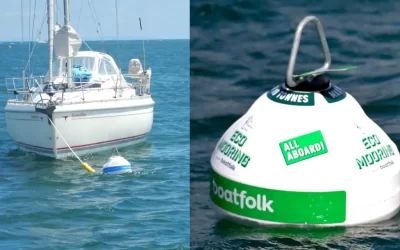To manage Studland Bay in a collaborative and sustainable way, ensuring the Marine Conservation Zone (MCZ) objectives are met, nature can flourish and people can enjoy the area without seriously impacting the environment. Ensuring recreational water users are a central part of this environmental initiative to restore seagrass meadows.
Project updates
Seahorse in action at Studland!
Click to view Seahorse found during eco-mooring installations June 2023
Project overview
Recreational boaters who use, visit and enjoy Studland Bay are being asked to help protect its precious habitats for the future.
After extensive consultation with the boating community and users of the bay, a Voluntary No Anchor Zone was introduced by the Marine Management Organisation in 2021 to help reduce damage caused by boats dropping and weighing anchors and extended in June 2022 (see the MMO’s Studland Bay MCZ Habitat Protection Strategy and website for more information). At all times, anchoring in emergency situations is still be permitted.
Representing a wide range of organisations, the Studland Bay Marine Partnership formed to work towards protecting Studland’s seagrass beds and its resident, and protected, long-snouted seahorse population and other marine wildlife.
Hundreds of waterborne visitors to Studland Bay already take a proactive approach to conservation by using eco-moorings. The SBMP has brought together key stakeholders and introduced a mooring solution that meets the needs of recreational boaters and protects the precious seagrass habitat.
For the 2024 summer season, 87 eco-moorings installed by the Studland Bay Marine Partnership will be available for boaters who are visiting the bay to use. These provide a fantastic solution allowing boaters to moor without dropping their anchors on the seagrass. Each eco-mooring has a helical screw anchor which is driven into the seabed and attached to the mooring buoy via an elastic rode which stretches and contracts with the tide, avoiding scouring the seabed.
Visit the HYS website below for more information about the project, including our eco-mooring coordinates, FAQs, how to donate to moor, or just donate and lots of supporting information about the Studland Bay Marine Partnership.
#CoastalRecovery #CoastalConnection #RespectTheCoast
Who’s listening?
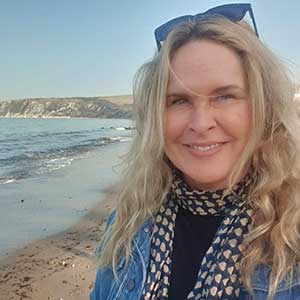
Sara Parker
Project Officer, Dorset Coast Forum
sara.parker@dorsetcouncil.gov.uk
01305 224728 / 07780 148790
Find out more about Studland Bay Marine Partnership



